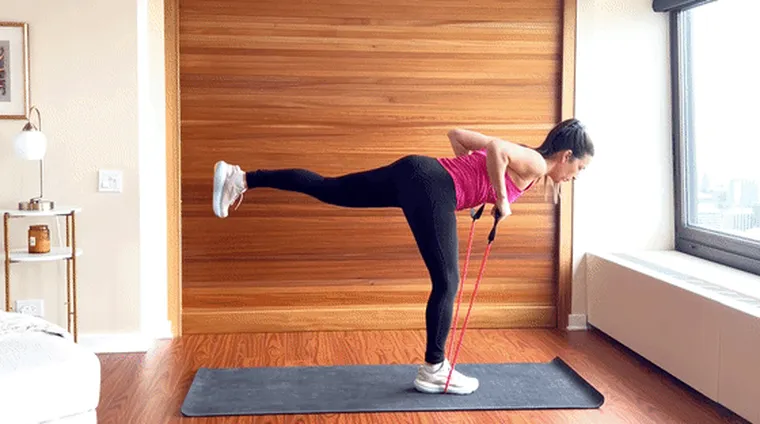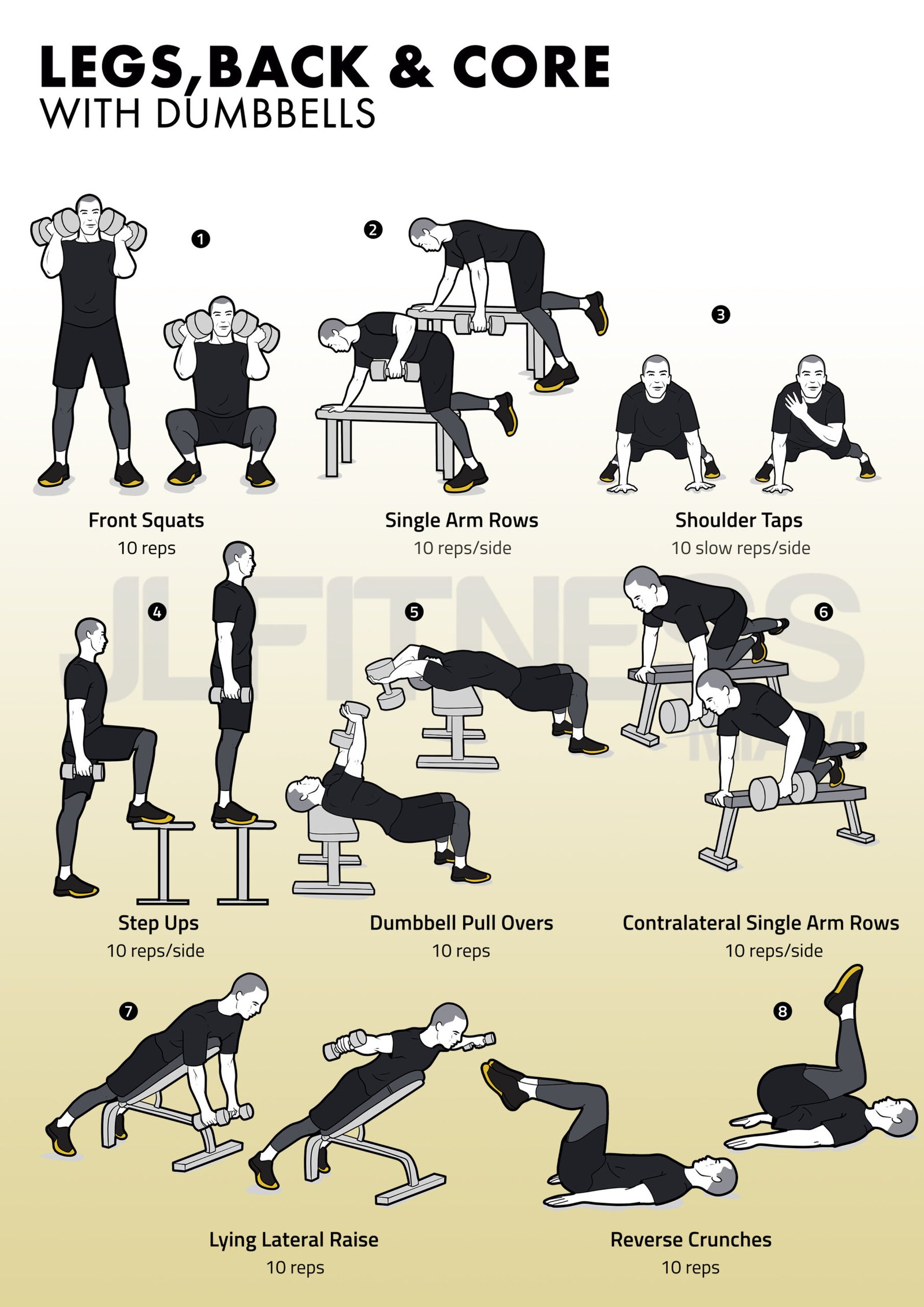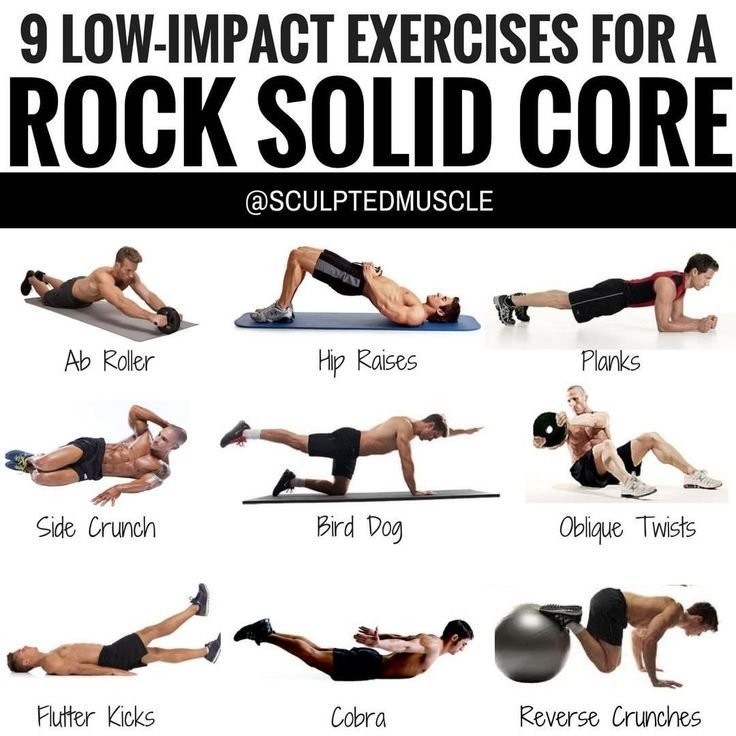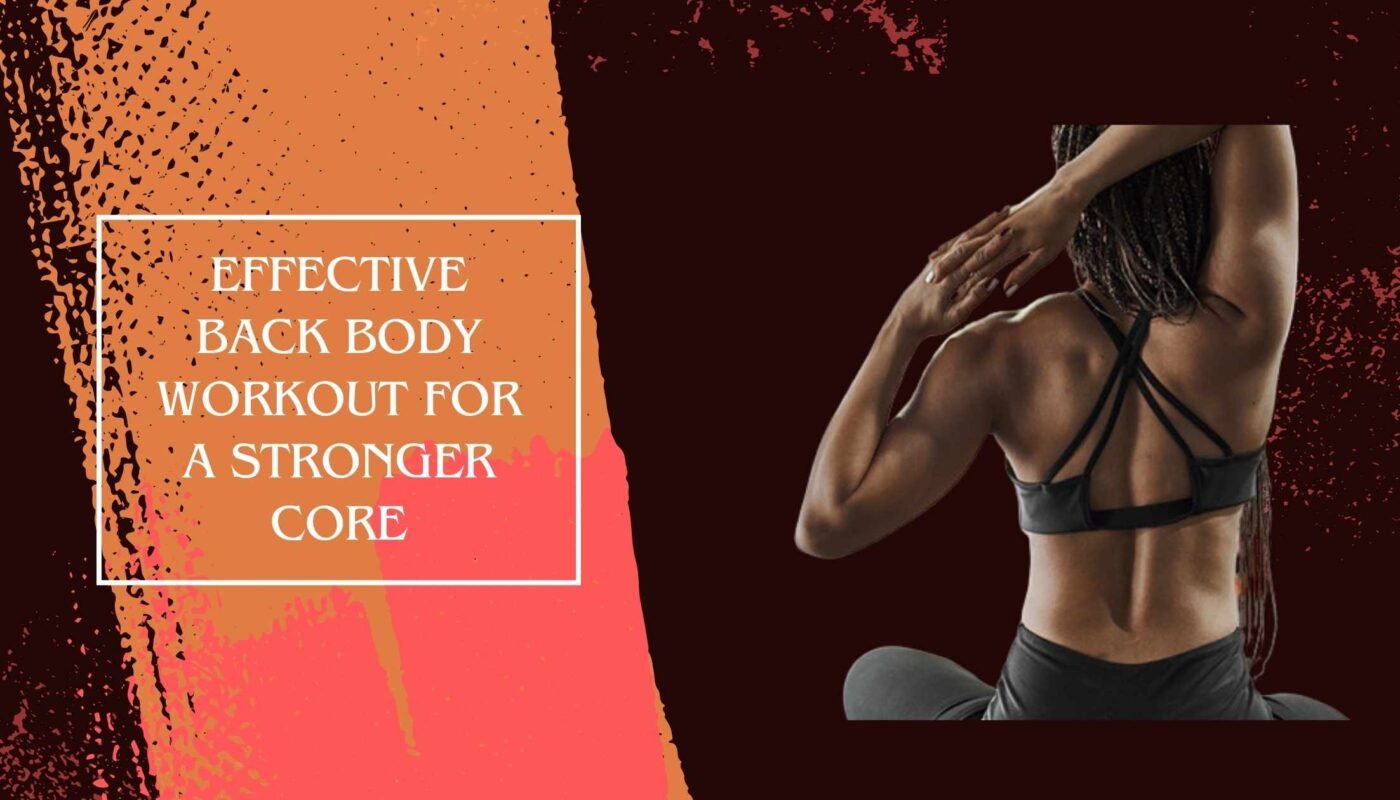Have you ever tried to reach something high up and felt a sudden back pain? This can be a wake-up call, showing us how important it is to take care of our backs. Many Americans suffer from low-back pain, with nearly 80% experiencing it at some point.

This risk grows as we get older, and it’s even higher for those who don’t move much. That’s why a good back workout is key.
Targeted exercises can change everything, helping both athletes and office workers. Core exercises like planks, bridges, and the bird dog strengthen and stabilize our core. They give our back the support it needs.
By adding these exercises to your routine, you can improve your life. You’ll turn discomfort into strength. Are you ready to build a strong back and core?
Table of Contents
Understanding the Importance of Core Strength

Core strength is key to better body function. It includes muscles around the abdomen and spine that help with back support and keeping posture right. A strong core is vital for everyday movements and sports.
Studies show core strength helps with back health, especially for those with chronic back pain. A 2015 study found over 50% of Americans have chronic back pain, often from weak core muscles. Strengthening the core can improve mobility and lessen pain.
As people get older, core strength can decline, as seen in a 2017 study. This makes it more important for overweight people to work on their core stability. Women, especially after menopause, may also see core muscle quality drop.
Doing core exercises has big benefits. A 2021 review found older adults who did core workouts got better balance, independence, and quality of life. These exercises boost both physical and functional abilities, making them key for everyone.
Core exercises like planks and sit-ups help tone the abs and boost fitness. They make it easier to do activities from yoga to weightlifting. A weak core can lead to posture issues, back pain, and injuries.
Stretching is also important for core fitness. It helps prevent muscle shortening and keeps muscles balanced. As we age, regular core exercises are crucial for keeping bones strong, reducing fall risks, and preventing injuries from poor posture.
In short, understanding the importance of core strength is key for good health and staying active. A strong core means better back health and a more active life.
Common Back Problems in Sedentary Lifestyles
Today, many people sit for long periods, leading to back problems. Chronic back pain is a big issue, affecting most adults at some time. About 80% of adults will have lower back pain sometime in their lives.
This shows we need to focus on the causes of back pain, like not moving enough.
Poor posture is a big cause of back problems. Sitting for long hours in the wrong position can make muscles stiff and strained. Office workers, sitting for up to six and a half hours a day, are at higher risk.
Also, lifting things the wrong way and not using the right body mechanics can make back pain worse.
Regular exercise is key to a healthy back. Doing stretching and strengthening exercises can make you more flexible and lower injury risk. Being active, along with eating well, can greatly improve your health and ease back pain.
It’s important to talk to a doctor before starting new exercises. This ensures you follow a safe plan that meets your needs.
Benefits of a Back Body Workout

Working out your back has many benefits of back workout that boost your health. A regular routine makes your back muscles stronger. This leads to better posture and lowers injury risks during everyday tasks.
Studies show that after four weeks of back exercises, people feel stronger and less pain. This is especially good for those with ongoing pain. A study found 75% of desk workers had back pain. Strengthening the lower back helps fight pain from sitting too much.
- Improved quality of life through increased functional capacity and reduced pain
- Enhanced resilience against common injuries
- Better sleep quality linked to reduced discomfort and improved body dynamics
- Increased range of motion and flexibility, minimizing the risk of injuries
- Detoxifying effects that enhance blood flow and oxygenation of tissues
Wrong back exercises can make pain worse and cause more problems. It’s key to focus on proper form and techniques. Using exercises like strength training, yoga, and rowing helps with core muscle strengthening. These also support your spine’s health.
Key Muscles to Target in Your Back Body Workout
Understanding the key muscles for back workout is crucial. Focusing on specific muscle groups for back strength boosts performance and lowers injury risk. Key areas to focus on include:
- Latissimus Dorsi (Lats): These large muscles extend from the middle back toward the sides, contributing significantly to back width.
- Rhomboids: Located between the shoulder blades, they play a vital role in retracting and stabilizing the scapulae.
- Trapezius (Traps): Spanning the upper back and neck, this muscle helps with shoulder elevation and rotation.
- Erector Spinae: This muscle group, running along the spine, is essential for maintaining posture and supporting the back during various movements.
Some key secondary muscles to target include the transverse abdominis, gluteus maximus, quadratus lumborum, and lumbar multifidus. Working these muscles strengthens the core and back.
To work efficiently, include a mix of exercises that target these areas. Pull-ups and bent-over barbell rows work the upper/outer lats. One-arm dumbbell rows target the middle back. Strength training programs suggest doing 2-3 sets of 8-12 reps for building mass, 4-7 reps for strength, and 15-25 reps for endurance. These exercises cover all vital target back muscles. By doing these, you can improve muscle development and back strength.
| Muscle Group | Recommended Exercises | Rep Ranges |
|---|---|---|
| Upper/Outer Lats | Pull-Ups (Wide Grip), Bent-Over Barbell Row | 8-12 reps |
| Lower Lats | Reverse-Grip Pulldown, Straight-Arm Lat Pulldown | 8-12 reps |
| Middle Back | One-Arm Dumbbell Row, Close-Grip Seated Cable Row | 8-12 reps |
| Lower Back | Back Extension, Stiff-Legged Deadlift | 8-12 reps |
- DO MORE WITH YOUR ROMAN CHAIR EXERCISE EQUIPMENT – Much more versatile than a regular roman chair hyperextension bench, …
- REDUCE & PREVENT LOWER BACK PAIN – Straighten your posture & take care of your lower back pain while easily strengthenin…
- STRENGTHEN YOUR ENTIRE BODY – Use the hyperextension roman chair to sculpt your upper body with preacher curls & dumbbel…

- Full-body Adjustable Weight Bench – Work Your Arms, Back, Chest, Glutes, Hamstrings and Core. Use for Bench Press, As a …
- Lift with Confidence – Our Multi-functional Workout Bench Works Well with Weights Dumbbells Set and are Made with High G…
- Comfortable and Sturdy – This Multi-functional Adjustable Bench is Designed with Triangular Base Support and Thick Cushi…

- 2 in 1 Upper Body Training Machine: Perform back extensions and abdominal crunches from the same seated position. The ro…
- Perfect Bottom Support: This AB back machine has 8 adjustable positions of foot restraints. Adjustable distance range: 3…
- Adequate Back Support: The 2 inch padded cushion is made with a high quality leatherette surface that is easy to clean w…
- Efficient Back Training – Designed for optimal back muscle strengthening and stretching. The 45-degree ergonomic design …
- Multifunctional Fitness Equipment – This versatile back extension bench targets back, core, hip, and leg muscles while s…
- Durable Construction – Crafted from high-strength carbon steel with an anti-abrasive coating, this hyperextension bench …

- 【Effect Hyperextension Training】Our bench helps strengthen the back while improving your posture, mobility, and balance….
- 【Multifunctional Workout Chair】With such simple back hyperextension bench, you can exercise the most major muscle groups…
- 【Durable & Sturdy Construction】The Foldable Roman Chair is built with high-quality materials and construction. It is des…

- FOAM ROLLERS: Kick your feet up, decompress, and stretch using the padded foam rollers.
- DUAL SAFETY STRAPS: 2 pairs of safety straps located on the front post of the stretch machine will help ensure the safe …
- PIVOTING SEAT AND KNEEPAD: Go further in your stretches with a travel distance of over 24 inches. Large, cushioned seati…

Essential Bodyweight Exercises for a Stronger Back
Starting with essential bodyweight exercises can make your back stronger. These exercises improve back strength and core stability. This is key for good posture and daily activities. Core workouts also help with balance and coordination, reducing injury risks.
Here are three exercises that work well for a stronger back:
Planks: A Core Stabilizer
Planks are key for core stability. They work the deep abdominal muscles and back. Hold each plank for 5 to 30 seconds, doing 3 sets. Rest for 30-60 seconds between sets.
Adding planks to your routine boosts core strength. This is important for all back exercises.
Bird Dog: Improving Balance and Stability
The Bird Dog exercise improves limb coordination. It supports the lower back and boosts balance. Do 3 sets of 5 to 10 reps on each side.
By moving an arm and the opposite leg, you work and stabilize your core.
Bridges: Strengthening Glutes and Core
Bridges work the glutes and core. They support the spine and help reduce back pain. Start with 3 sets of 10-15 reps, holding each bridge for 5 seconds.
As you get stronger, try holding the bridge longer. This improves stability and strength for your back.
Best Bodyweight Back Exercises
When you want a stronger back, using the best bodyweight exercises is key. These exercises work on different muscles and help with coordination. The Glute Bridge and Dead Bug are key moves for stronger glutes and core stability.
Glute Bridge: Targeting Your Glutes
The Glute Bridge is great for working your glutes and core. It helps keep your pelvis stable. To do it, lie on your back, bend your knees, and lift your hips up. Squeeze your glutes at the top. Do three sets of 12 to 15 reps for best results.
Dead Bug: Enhancing Coordination
The Dead Bug is perfect for better coordination and core strength. While lying on your back, move your arms and legs together. Keep your lower back flat on the floor. This helps with trunk stability and can prevent back injuries. Aim for three sets of 10 to 12 reps for good results.
Adding these exercises to your routine can make your glutes stronger and your core more coordinated. This is key for staying fit and avoiding injuries.
Upper Back Bodyweight Exercises for Improved Posture

Working on upper back exercises is key for good posture and spine health. Pull-ups and resistance band rows are great for this. They help keep your spine in line, fighting against the bad effects of sitting a lot.
Pull-Ups: Building Upper Back Strength
Pull-ups are a top choice for building upper back muscles like the lats and trapezius. Aim for three sets of 8-10 reps for best results. If you’re new to working out, start with easier versions like assisted pull-ups to build up.
Resistance Band Rows: An Effective Alternative
Resistance band rows are great for muscle engagement and posture. They’re good for all skill levels and should be done in three sets of 12-15 reps. This exercise strengthens the upper back and shoulders, helping to prevent back pain and improve posture.
Bodyweight Lower Back Exercises to Prevent Pain
Lower back pain is a common issue, affecting millions in North America. Doing lower back exercises is key to preventing pain, especially for those who sit a lot. These exercises strengthen the core and help fight pain from poor posture and weak muscles.
By adding certain movements, you can improve the stability and strength of important muscles like the erector spinae, glutes, and core. Here are some top bodyweight exercises for the lower back:
- Planks: Great for core stability, forearm planks work many muscle groups and support the whole body.
- Side Planks: This targets the obliques, helping to balance the sides and prevent imbalances.
- Glute Bridges: Focuses on the glutes, making sure they help support the lower back.
- Bird Dogs: A dynamic exercise that works the core and stabilizes the spine, promoting overall core strength.
Doing these exercises can lower the risk of getting low back pain, especially for those who sit more. With more people facing lower back pain, using bodyweight exercises for this area is key to a balanced fitness routine.
The Role of Posture in Back Health
Posture greatly affects back health. It keeps the spine in line, which is key to reducing back muscle and ligament strain. Poor posture can lead to discomfort and pain in the shoulders and lower back.
A study showed posture’s importance. It was an eight-week exercise program for 88 people at S University. The program focused on activities that help keep the spine aligned. Men were 23.2 years old on average, and women 21.3 years old.
Participants did exercises for 20 minutes, three times a week. They saw a big drop in pain, especially in the shoulders and middle back.
Good posture helps keep the spine aligned, which is good for the body. It also helps with focus and efficiency, especially for those who sit a lot. This is important for people like esports betters who often have lower back pain from sitting too much. Moving around can help ease pain and boost well-being.
| Exercise Types | Pain Reduction (Scale) | Participants Reporting Relief (%) |
|---|---|---|
| Deep Breaths | 2.3 | 80% |
| Shoulder Straightening | 1.8 | 75% |
| Calf Stretching | 1.5 | 70% |
| Spine Flexibility | 1.2 | 85% |
| Abdominal Strengthening | 1.4 | 78% |
Exercises that focus on spinal alignment and strength can lower the risk of chronic pain. Studies show how crucial proper posture is for a healthy back. Training to improve posture can lead to great results, making it a key part of staying fit.
Incorporating Bodyweight Workouts into Your Routine
Adding bodyweight workouts to your fitness plan can boost your strength and stability. These exercises need little to no equipment, making them perfect for all fitness levels. Begin with brief sessions a few times a week to build a habit and keep up with your workouts.
A 20-minute CrossFit bodyweight AMRAP session can be more effective than traditional cardio like running on a treadmill. This shows how efficient bodyweight workouts are in giving big benefits in a short time.
Bodyweight exercises also help grow muscles without needing extra weights. By doing these exercises fully, you can get big strength gains. For example, press-ups and one-arm push-ups are great for building muscle and keeping your core stable.
Bodyweight workouts are also very adaptable. They can be changed to fit your fitness level and progress. This makes it easier to stay motivated and keep your fitness routine interesting. Adding exercises like handstand push-ups, bar muscle-ups, and pistol squats can challenge you in many ways, helping you get stronger overall.

The table below lists some recommended bodyweight exercises you can add to your workout plan:
| Exercise | Focus Area | Key Benefits |
|---|---|---|
| Handstand Push-Ups | Shoulders | Improves shoulder strength and stability, beneficial over traditional presses |
| One-Arm Push-Ups | Core & Obliques | Enhances core stability and builds overall strength |
| Bar Muscle-Ups | Upper Body | Develops explosive pulling power and upper body strength |
| Pistol Squats | Lower Body | Builds lower body strength without excessive mass |
| Front Levers | Core & Lats | Enhances core engagement and lat strength |
| Stand to Stand Bridge | Flexibility & Posture | Increases flexibility, posture, and athleticism |
| Weighted Chin-Ups | Back & Arms | Strengthens overall muscle groups effectively |
| Dips | Chest & Triceps | Builds muscle in upper body |
By regularly adding bodyweight workouts to your routine, you can improve your mobility, stability, and skills. This method helps you reach your fitness goals in a flexible and effective way.
Creating a Balanced Workout Plan
A balanced workout plan is key for overall fitness and boosting back strength. It includes exercises that work different muscles for a full fitness plan. Adults should do at least 150 minutes of moderate activity each week, spread out over five days. Add two days for muscle-strengthening activities.
Planning your workouts for back strength means mixing upper and lower body exercises. A good plan might have four muscle-strengthening sessions a week. This includes two days for upper body and two for lower body. Each session should have 10 reps for three sets, with time to rest between sets.
Important exercises include deadlifts, bicep curls, and glute bridges. These help strengthen both the upper and lower body.
| Exercise Type | Example Exercises | Sets | Reps |
|---|---|---|---|
| Upper Body | Dumbbell Rows, Chest Presses | 3 | 10 |
| Lower Body | Deadlifts, Hip Thrusts | 3 | 10 |
Warm-ups and cool-downs are key in a balanced workout plan. Warming up for 5-10 minutes before and stretching helps prevent injuries. After, cool down with gentle stretches to aid in muscle recovery. Active rest on off days keeps the body ready for the next workout.
Increasing the weight or reps over time helps build strength. This method, called progressive overload, leads to muscle growth and better endurance. A well-planned workout for back strength boosts physical ability and supports a healthier life.
Tips for Proper Form During Back Body Workouts
Getting your form right is key to getting the most out of your workouts and staying safe. When you’re doing back exercises, keep your spine straight. This helps work the right muscles like the lats, upper traps, and lower traps. Always keep your core muscles tight to help keep you stable.
- Start with a warm-up to get your muscles and joints ready.
- Choose a grip that lets you work your back muscles best.
- Make sure to move through a full range of motion for full muscle work.
- Adjust how many reps and sets you do based on what feels right for you.
- Do exercises that work on both vertical and horizontal pulling to hit all major back muscles.
Following these tips helps you grow your muscles safely. Adding exercises for the rotator cuff muscles 2-3 times a week will boost your back strength. Remember, focusing on form makes your workouts more effective and rewarding.

Frequency and Progression for Maximum Results
Working out your back muscles regularly is key for the best results. Doing two to three sessions a week helps build endurance and strength. This schedule lets muscles recover while still pushing for better performance.
Increasing the difficulty of your workouts is vital for ongoing progress. Slowly add more exercises and intensity to keep challenging your muscles. Mixing different exercises, like horizontal and vertical pulls, targets various back areas.
Here are some training plans to consider:
- Total Body Split: Great for beginners, with a 3-day routine.
- Upper vs. Lower Split: A classic 6-day plan that splits training into upper and lower body.
- Push Pull Legs (PPL) Split: A 6-day routine that groups workouts by movement type.
When planning your back workouts, include 1 to 3 different exercises per session. Over a week, aim for 2 to 5 different exercises for a balanced approach. Make sure to move through the full range of motion in each exercise and focus on control, not speed.
Following a structured routine with the right workout frequency and progressive training leads to better results.
| Training Split | Recommended Days | Benefits |
|---|---|---|
| Total Body Split | 3 | Frequent muscle stimulation and longer recovery. |
| Upper vs. Lower Split | 6 | Increased volume and muscle protein synthesis. |
| Push Pull Legs Split | 6 (or adapted) | Targeted muscle group training and flexibility. |
Consulting a Specialist for Persistent Pain
About 80 percent of adults will experience back pain at some point. If you’re dealing with ongoing back pain, just exercising might not help. It’s important to get professional medical advice to find out what’s causing it and how to treat it. Talking to back specialists can help you find the right care for your needs.
Often, people with persistent pain start with six weeks of physical therapy. But if that doesn’t work, you might need more tests like MRIs to find the cause. Knowing when to see a pain management doctor is key. They focus on long-term pain and can offer specific treatments. Getting care from different specialists can make sure you’re looked after fully.
Getting help for persistent back pain early can make a big difference in your life. It can stop the pain from becoming a constant issue. It’s good to keep up with your health and take action early. For more tips on starting your recovery journey, check out this helpful guide.










